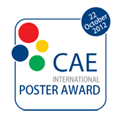
| |
EnginSoft - Conference Abstracts
EnginSoft International Conference 2009 |
A FEM approach to turbogenerator design |
Antonelli Emanuele - Ansaldo Energia |
Abstract |
| Turbogenerator design plays a key role in the overall design of a modern power plant affecting importantly the overall reliability of the system. On the other hand, the quick evolution of the energy market is characterised by more and more strict requirements concerning power quality and, more generally, the reliability of the turbogenerator section in power stations. Furthermore, for many applications dimensional restrictions have to be met: optimum utilisation of materials through balanced electromagnetic, thermal and mechanical design is essential. It is well known how the prediction of the temperature distribution in the insulating materials contributes to ensure the performances of the insulating materials. Competitive price must be kept, naturally leading to the optimal design of the machine. Such an optimization is bound to be based upon integration of engineering disciplines: electromagnetic, structural and (possibly) coupled CFD analysis can be routinely performed during the generator design/optimization process thanks to the overspread of modern CAE technology. In particular, the dynamic and stability performances of the turbogenerator are an important parameter for the Customer, therefore requiring particular care from the generator producer side. For this reason the Development Engineering (ISV) of Ansaldo Energia (AEN) has undertaken a research program aimed to boost the prediction capabilities of the well established existing analysis procedures for the turbogenerator product line. The research program envisages of course a number of experimental numerical comparisons.Concerning the magnetic design, this program makes an intensive use of advanced numerical methods and, in particular, of 2D/3D finite elements analysis (ANSYS EMAG module). In particular, some 3D edge formulation based analysis has provided one of the first benchmark of the new elements 236/237 available in the latest ANSYS release. The overall procedure is organized in a modular way exploiting parametric representation and automatic mesh generation of a number of geometries and will cover mainly steady state operating point analyses, transient analyses, copper and iron losses, operational inductances evaluation, end winding effects, etc. Integration and, eventually, coupling with structural and CFD analysis is also envisaged. In the full paper some preliminary results obtained will be presented highlighting the more detailed machine design achieved. |
Back to index |



